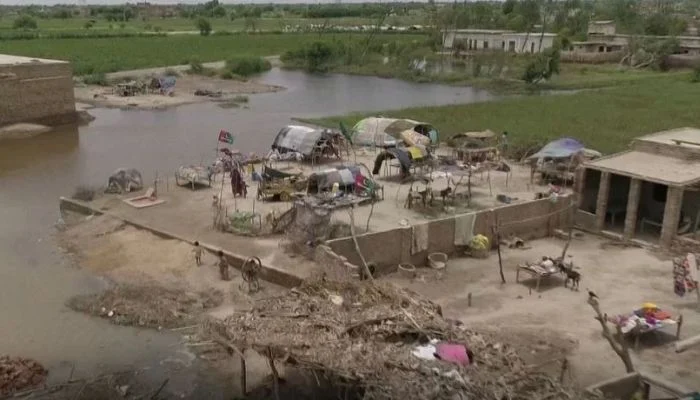According to the UN Office for the Coordination of Humanitarian Affairs (UNOCHA), flood victims in Punjab and Khyber Pakhtunkhwa are returning to their homes or areas near to them to assess the state of their livelihoods.
According to the UNOCHA’s most recent situation assessment, the last week saw decreasing floods, mainly in Sindh and Balochistan.
According to the report, water is draining from the Sindh districts of Kashmore, Kandhkot, Larkana, Ghotki, Sukkur, Tando Allayar, Shaheed Benazirabad, Tando Mohammad Khan, Umerkot, and Sanghar.
According to the UN Satellite Centre’s measurements, the area under floodwater in Balochistan, Punjab, and Sindh has dropped by about 300, 900, and 4,000 square kilometres, respectively.
The population will be severely impacted by the impending winter’s harsh weather conditions in a few weeks, necessitating adequate shelter and non-food supplies such tents and blankets.
However, the flood-affected communities continue to face growing difficulties due to the spread of diseases.
In Sindh and Balochistan, outbreaks of waterborne and vector-borne illnesses are still on the rise, in part because of the destruction of medical facilities and the accumulation of standing water.
According to the government-led multi-sector rapid needs assessments (RNA) carried out in Sindh’s worst-affected districts, 37% of the key informants said their closest health institution was inoperable or just partially functional.
Another obstacle to giving those in need access to proper health care is reports of low stock levels of necessary medications and medical supplies.
According to the research, roughly four million children in the impacted areas lack access to health care, while approximately 650,000 pregnant women have trouble getting to maternal services.
The lack of suitable sewage and water facilities further made the health situation worse.
According to the OCHA, damage to the water supply infrastructure and sanitation facilities has left an estimated 5.5 million people without access to safe drinking water as vast portions of Sindh continue to be under water.
Children were most vulnerable to the negative effects of decreasing hygienic and health conditions.
Nearly 10 million children required emergency life-saving assistance as of October 7, including 4 million without access to medical care and 7.6 million who were at risk for harm.










